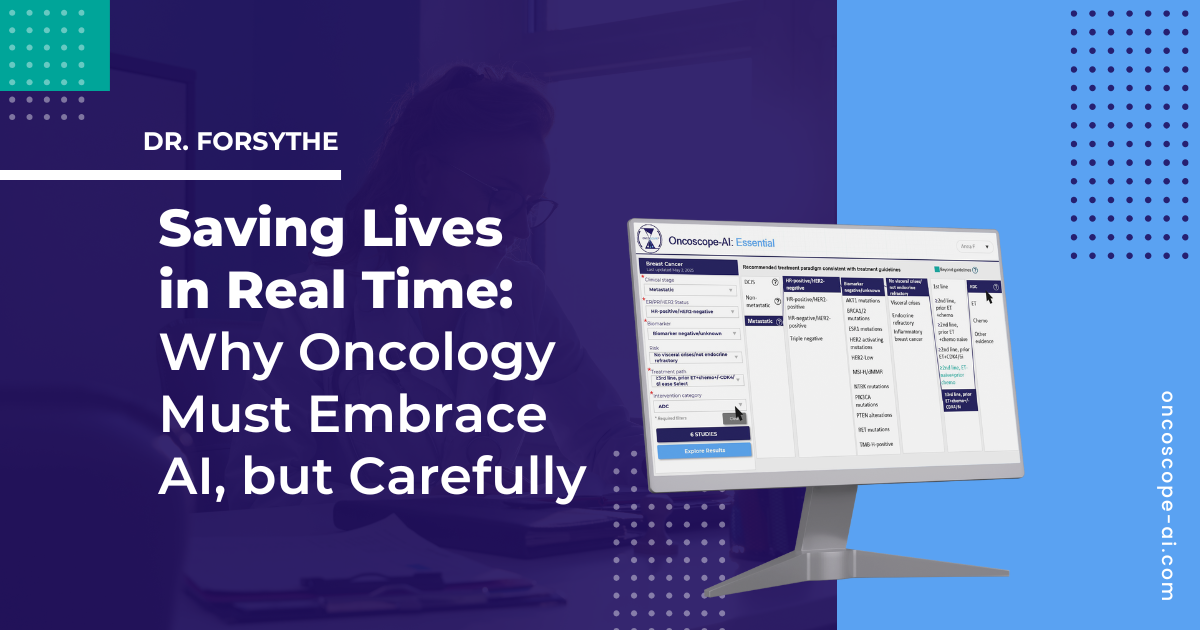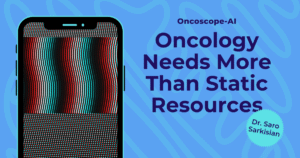In January, my close friend Susan received devastating news: after six long years of navigating chemotherapy, surgery, radiation, and a targeted therapy that had finally given her back her quality of life, her breast cancer had returned, this time to her liver. She was terrified, not just of the disease, but of what might come next.
“I just don’t want to go through chemo again,” she said, fighting back tears. “Is there anything new?”
Her oncologist, she said, was excellent. But like so many today, he was overwhelmed. She feared he wouldn’t have time to search for new options that might have emerged in recent months. As a health economist, I’ve spent years sifting through research and data, and I knew that finding up-to-date, reliable information shouldn’t depend on how many hours a doctor can spare after a crushing workload serving patients in the clinic.
The mountain of data is overwhelming to even the most dedicated physician trying to keep up. In 2024 alone, over 4,800 papers were published describing breast cancer clinical trials. In the first three months of 2025, another 860 have already appeared.
Meanwhile, headlines everywhere tout artificial intelligence (AI) as a revolutionary force in healthcare. But wise physicians and patients alike know the truth: while AI’s potential is enormous, its safe and meaningful application demands careful human oversight, clinical rigor, and a deep understanding of what is at stake.
That’s why I turned to a new kind of tool—an AI system specifically designed for medicine, rigorously vetted by human experts, and built not just to gather data, but to curate it, critically evaluate it, and prioritize clinical relevance. Far beyond your average ChatGPT-style chatbot, the tool was a hybrid system: part artificial intelligence, part human expertise. Behind the scenes, it performed a systematic review of the latest literature, flagged high-quality clinical trials, and filtered out unreliable data, creating a curated, searchable database of real, actionable evidence.
Within minutes, this hybrid AI-human platform helped me discover a promising new class of drugs—antibody-drug conjugates or ADCs. These therapies target chemotherapy precisely to cancer cells, sparing healthy tissue and potentially reducing side effects. One ADC had just demonstrated outstanding results in a major clinical trial—results so recent they hadn’t yet made it into official treatment guidelines.
Susan shared this information with her oncologist. After reviewing the evidence, he agreed. Today, she is on the new therapy—and planning her next vacation.
As Dr. Mehran Habibi, a leading breast cancer surgical oncologist in New York, put it to me recently:
“AI can’t replace clinical judgment—but it can support it. The only way physicians will trust these tools is if they know the science behind them has been vetted by humans who understand the stakes.”
What’s striking isn’t just the speed with which this information was uncovered, but the fact that it could so easily have been missed, he said. “While oncologists are expected to stay on top of a constantly evolving field, the guidelines they depend on, produced by expert committees, are updated infrequently, and, despite the best of intentions, are not immune to biases or conflicts of interest. Additionally, tools like ChatGPT, while popular, can’t be trusted to provide rigorously sourced, clinically relevant information. They’re prone to consider misinformation and half-truths rampant on the internet, and often present content that is incomplete, outdated, or based on opinion rather than evidence.”
ChatGPT and other apps that utilize AI are powerful tools in many fields, but not necessarily for clinical science, which demands the highest rigorous standards to be useful to oncologists, he continued. “We don’t rely on GPS apps that guess which roads exist — we expect accuracy and live updates. We don’t book flights through websites that suggest destinations based on personal blogs instead of real availability. So why would we accept anything less in cancer care?”
The future of oncology demands “living guidelines”—dynamic, continuously updated frameworks that reflect the latest discoveries, not just a data-dump collected over the last 12 months. That’s what this new class of AI/human tools can enable. They don’t replace the physician. They equip them.
And that’s the real power of this approach: it can free up doctors to spend more time with their patients, not less. AI/human tools can support medical education, help residents prepare for board exams, and enhance shared decision-making by providing clear, visual explanations of treatment paths.
Susan’s story has a hopeful turn. But there are countless others who may not be as lucky unless we rethink how we connect patients to the best and latest therapies. The race between cancer and medicine is relentless. It’s time we give our doctors the tools to win it. Not because they make decisions for us, but because they make it easier to find the right ones.



